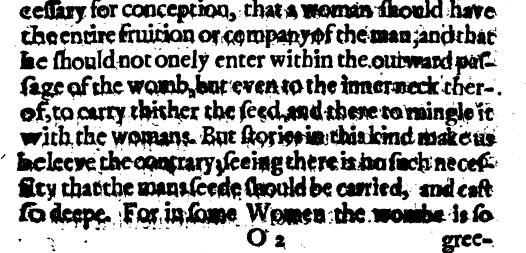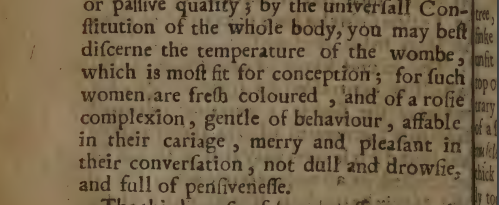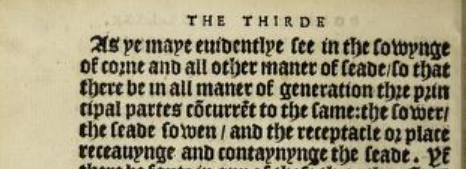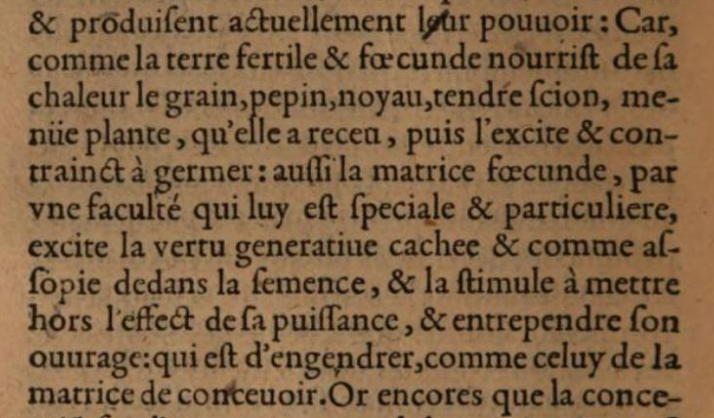Conception
“…the cause why the child is a boy or a girl is the heat of the seed, if the mans seed prevail in mixing above the womans it will be a boy, else a girl”
(Sharp, 1671, p. 120)
Religiously and culturally, the act of conceiving was hugely important, while the ability to fall pregnant was also culturally coded into the psyche of society. This societal importance attached to conception is thus imported into medical texts of our time period. Common questions that we have encountered in our reading include the role of the female orgasm in conception, signs of conception and false conceptions.
Roselin identifies three central components of conception, “the sower / the scade sowen / and the receptacle or place receauynge and contaynynge the seade” (1532/1540, n. pag.).
In Guillemeau’s text, the author discusses the physical act needed to “enter within the outward pas∣sage of the womb, but even to the inner necke ther∣of, to carry thether the seed, and there to mingle it with the womans” (1609/1612, p. 107).

In Trois livres, the same triple of conditions as Roselin is presented, with the agriculture metaphor persisting in the language chosen by the author. Here, a connection is made between the fertile earth and the fertile womb, both of which nourish the seed by “sa chaleur” (Marinello & Liébault, 1563/1582, p. 550).
A Woman’s Doctour advises temperance, giving a dubious set of personality traits supposedly conducive to conception, namely that “women [who] are fresh coloured, and of a rosie complexion, gentle of behaviour, affable in their cariage, merry and pleasant in their conversation” (Fonteyn, 1644/1652, p. 130) are more inclined to conceive.


We get another definition of conception from Mauriceau with his description that “conception is nothing else, but an action of the Womb, by which the prolifick seeds of the Man and Woman are there received and retained, that an infant may be engendered and formed out of it” (1668/1736, p. 10).





